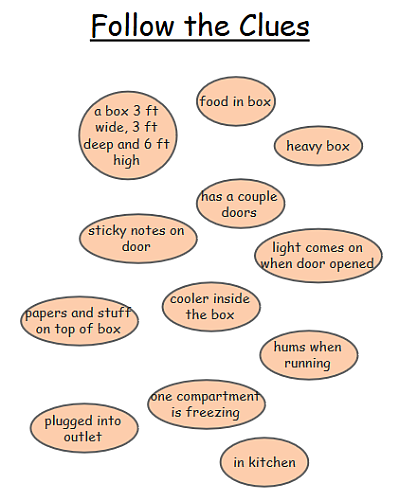
Web of wonder: Patterns in the web [Systems thinking & modelling series]
This is part 3 of a series of articles featuring the book Beyond Connecting the Dots, Modeling for Meaningful Results.
What you learn, and your capacity to learn, serves as a basis for everything you do in life. Yet, have you ever really thought about how you learn about the world around you? There are some things you memorize early in life, like the times tables. Is memorizing really learning? You know if you put your hand on something very hot it will burn you. Do you remember that, or did you learn it? And if you learned it, how did the learning happened?
The “Follow the Clues” interactive learning environment (ILE) is intended to provide an insight as to how you actually learn. Later we will also introduce concepts on improving your learning, and actually test whether what you have learned is really correct.
Does the order of the clues really matter?
Need help? See the Model instructions
You have most likely come to understand that all refrigerators are not identical. Some have one door with a separate compartment inside. Some have two doors and a drawer. Some are much smaller than others. Some can fit under a counter and some even fit on top of a counter. Some may be so large you can walk into them.
Even when you see different looking refrigerators you quickly decide it’s a refrigerator. How does that happen? Gregory Bateson, one of the great thinkers of our time, said, “It’s the pattern that connects.” If you reflect on this statement you should come to realize there are actually different ways to interpret what it means. In this particular case the pattern connects you to the following purposes of a refrigerator.
- The box keeps food from readily spoiling by keeping it cold
- Part of the box is a freezer that keeps food from spoiling for even longer
And with this realization you understand it to be a refrigerator. Though now that we’ve arrived at this understanding we still haven’t addressed the question of how you know. You were probably not actually taught that the above purpose represents the essence of a refrigerator. Most people were not, though they have essentially learned it over time.
Patterns in the web are the way we look at and understand the world around us. All we have are our patterns. They are the way we understand everything. This is so because we build our understanding based on what we already understand. The world around us simply has too much detail for us to pay attention to everything. A refrigerator has many pieces, though how many do you really pay attention to? Probably not many, unless you build or repair refrigerators. We choose what to pay attention to in the world around us, filtering out much of the detail so we don’t become overloaded. Sometimes we do this consciously and sometimes we do it subconsciously through experience. In the midst of what we choose to pay attention to there are patterns. Whether we realize it or not, it is these patterns that we pay attention to and attempt to make sense of. We understand these patterns by linking them to, and extending patterns we already understand, while we ignore much of the detail around us.
Next edition: Web of wonder: Learning and simulation.
Article sources: Beyond Connecting the Dots, Insight Maker. Reproduced by permission.
Header image source: Beyond Connecting the Dots.




